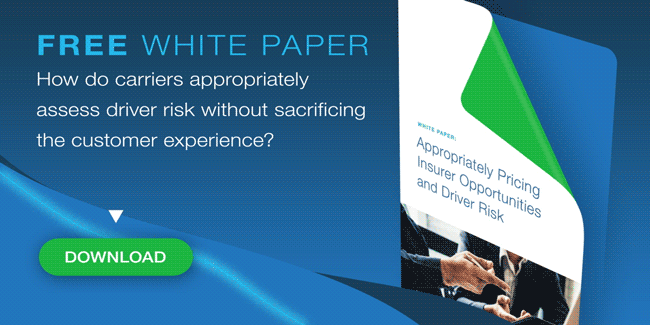As an insurance carrier, how are you managing risk? In a perpetually evolving market with a variety of challenges, it’s not made easy. Targeting foreign or unlicensed drivers presents both opportunities and challenges in pricing and assessing risk.
The number of those in possession of a foreign driver’s license (FDL) or those without a license has increased over the years. Many of these drivers also hold a United States license – around 30% – but falsely claim FDL or lack of license to avoid a motor vehicle record (MVR) pull and violation activity discovery.
Customer Expectations Have Evolved
Now, more than ever, customer expectations have increased and the best price wins out, with over 40% of households actively insurance shopping. We’re in the modern age of immediate gratification, and insurance is no different. That’s why 75% of consumers are beginning their journey looking for a simple, quick and transparent experience.
As a result, carriers are streamlining the application by reducing the number of questions in the hopes of expediting the quote process to deliver a bindable quote. While this seems great in theory, in practice, it’s not. These factors are creating challenges that result in premium leakage and higher loss ratios.
Without processes in place to validate risk, carriers as a result are subject to adverse selection. There is a way to turn risk into reward for insurers – to uncover which drivers have valid licenses from those who don’t while conquering commonly seen rate evasion tactics.
One of the Most Common Insurance Fraud Trends: FDL and Unlicensed Risk
With a rising number of FDL and unlicensed drivers in carrier books and loss ratios climbing, it was believed that books were being impacted through rate evasion tactics. Carrier suspicions grew that people were claiming wrongfully claiming FDLs or were unlicensed to hide driving behavior that impacted insurance premiums. Turns out, they were right.
Through SambaSafety’s proprietary carrier customer study, it was confirmed that a large population of drivers were falsely claiming FDL or were unlicensed. Such behavior isn’t hidden without reason, either to avoid previous violation detection or to hide identity, fraud or even more nefarious criminal activity.
Not all hope is to be lost for carriers. This driver subset presents both risk and opportunity when effective underwriting methods are employed.
FDL and Unlicensed Drivers – by the Numbers
At first pass, you may be thinking to yourself – “how large is this problem?” Our numbers coming from the SambaSafety study paint a telling story focused on finding answers to the following two questions:
- Are these claims of an FDL or lack of license true?
- If these claims are false, why didn’t the driver acknowledge their United States license?
Findings showed that nearly one-third of drivers alleging to hold only an FDL or claimed to be unlicensed in California did indeed have a United States license. This population also presented higher driving risk when compared to the average driver by state.
Looking at violation rates over the last seven years, the study population in California had a violation rate of 33%, or eight points higher than the state average. These individuals were also identified as being 150% more likely to have had a major violation in the past three years. The most alarming finding though was that rates of alcohol and/or drug-related citations were 22% higher than the state average.
What Insurers Can Do to Compete
Consider this – what havoc would an unlicensed or FDL driver wreak on your book of business? To compete in a competitive landscape where customer expectations are higher than ever, insurance carriers need a simple process to verify license state and identity fraud before it negatively impacts their business. They also need to ensure that they’re attracting and retaining the right customers while effectively pricing risk.
It’s important to remember that there’s no such thing as bad insurance risk, but instead only poorly priced risk. Validation is key in understanding and accurately pricing unlicensed or FDL drivers. While there’s not a one size fits all approach when pricing an FDL or unlicensed driver, carriers are managing to overcome such a challenge.
Download our white paper and learn more about how Texas’ FDL and unlicensed driver population compared to California’s, top violations these drivers are hiding and the steps carriers are taking to assess risk without sacrificing the customer experience.


